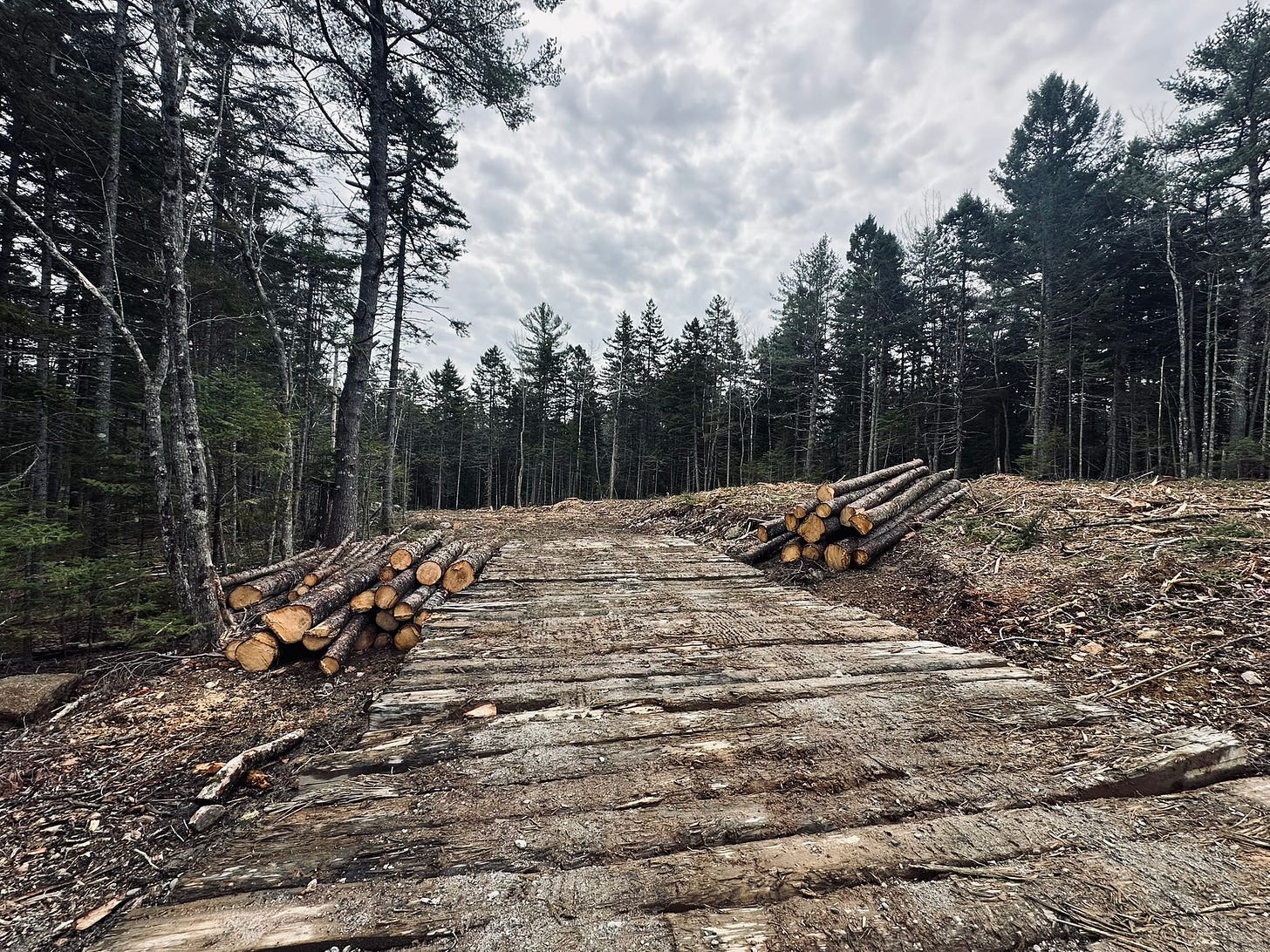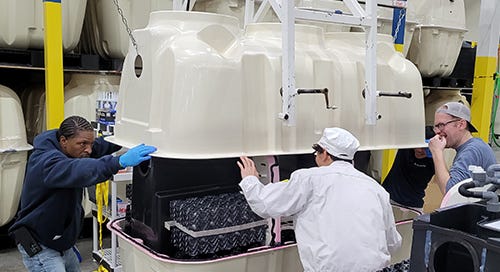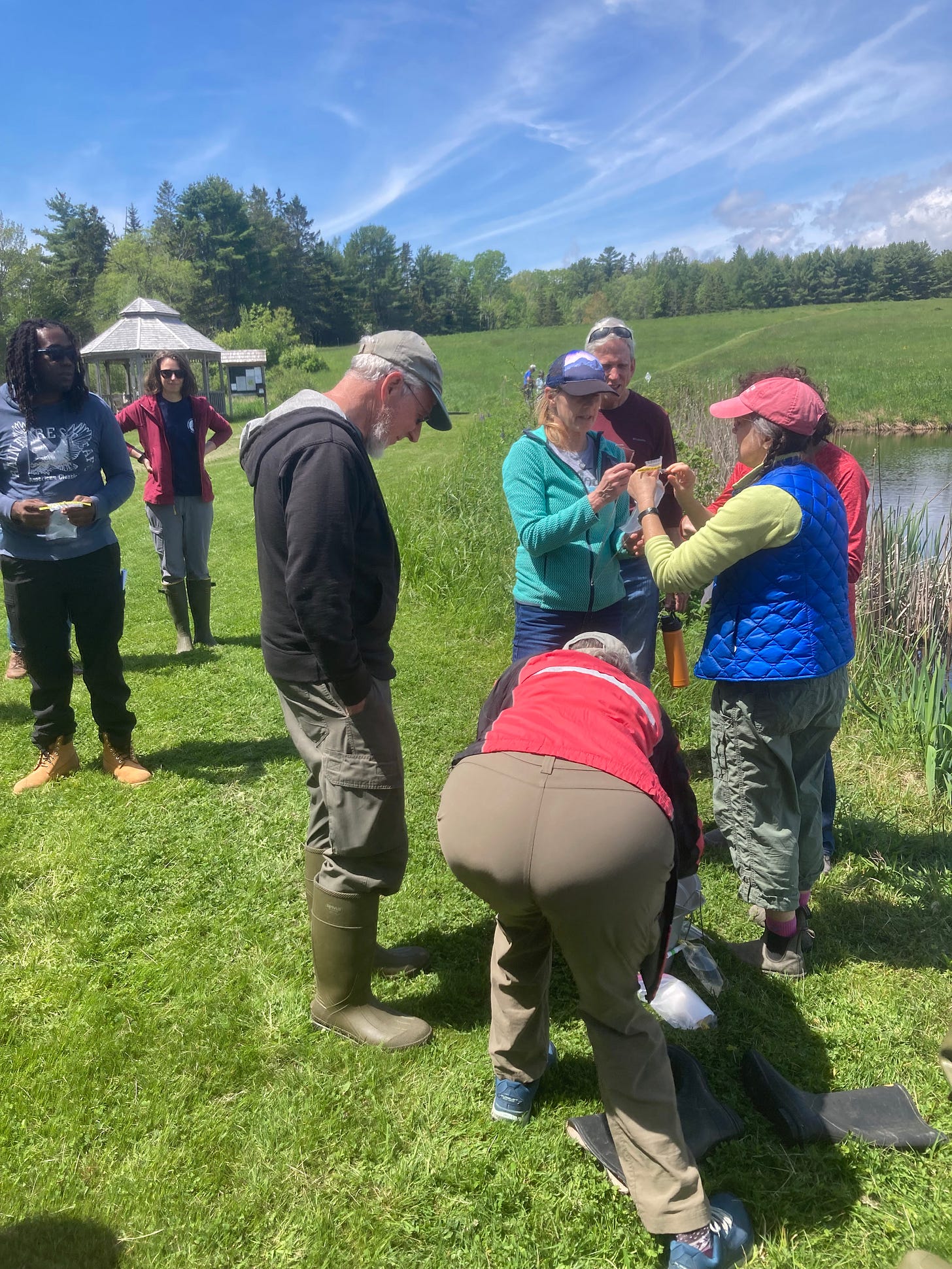BAR HARBOR, June 8, 2025 — Mount Desert Island is the second-largest island on the East Coast. Only Long Island is larger. Suffolk County, which makes up most of Long Island, has been called the “cesspool capital of America” because of its reliance on outdated septic systems and cesspools rather than sewers.
In 2014, IBM, as part of its Smart Cities program, warned that Suffolk County needed to take urgent action on water management.
“If Suffolk County wants to continue to grow its economy, attract tourists, and deliver a high quality of life, it must tackle water management with shared goals and an integrated approach,” it stated.
Since then, more than 4,000 advanced wastewater systems have replaced septic tanks and cesspools in homes and businesses across Suffolk County.
A similar technology is now being used in Maine. Fuji Clean, based in Brunswick, produces Japanese-designed systems that remove nitrogen - a key pollutant - from wastewater.
The DEP in 2014 designated the Northeast Creek estuary on MDI as “impaired” - the first such designation for a major waterbody on the island.
Similar warnings went unheeded in places like Long Island, Cape Cod, Chesapeake Bay, Lake Erie and the Florida coast - until water crises and public health threats emerged.
Bryan McGowin, whose company installs advanced systems on Long Island, recalled:
“Algal blooms in the ‘80s devastated our shellfish. The IBM study showed massive nitrogen loading. Drinking water was threatened. The cost to treat all drinking water would have been over $200 billion, while replacing septic tanks cost about $8 billion. That pushed the county into action. Sewer systems weren’t feasible in many areas — just like in Maine.”
Northeast Creek hasn’t had consistent water testing in 15 years. The DEP is now resuming sampling through its volunteer monitoring program, in partnership with the town. (The DMR already tests the estuary for shellfish safety.)
Traditional septic systems do a decent job filtering out some pathogens in effluent — but they don’t remove nitrogen, which is increasingly prevalent due to more frequent rainfall and overdevelopment.
Despite the impairment designation, there's no serious local or state discussion underway to protect Northeast Creek or other Maine waters from nitrogen loading. In fact, Bar Harbor is promoting land above and near the watershed for new housing - aiming to solve a housing crisis, but potentially triggering an environmental one.
I could find only one town in Maine — North Yarmouth — which permits nitrogen-reducing systems. The town wrote the ordinance so that it was not punitive. It allowed lots as small as a half acre for houses as long as the owner built it with an advanced wastewater treatment system.
In 2018, a developer proposed to build a cluster type subdivision in North Yarmouth where all the houses would be grouped to allow half of the subdivision to stay undeveloped.
“All well and good, right? Rather than having sprawl across our nice town, it incentivized preservation of open space,” said abutting neighbor Paul Porada, who happened to be a ground water engineer.
“So we got a subdivision going into my backyard,’ Porada said. “I wanted to make sure it's done right.”
That was the impetus for the developer to employ a better waste water treatment system - one which would filter out nitrogen.
North Yarmouth, a town with 4,106 residents, has no sewers. Nitrogen filtering systems are becoming more common there.
One notable project is the Deacon Hayes Commons, a 12-unit residential development that utilizes three Fuji Clean CEN21 systems. The CEN21 units treat wastewater from multiple households. Another Fuji Clean project was the Village Green Apartments.
For now, the Northeast Creek impairment designation is only for the estuary where salt water mixes with upstream freshwater. But Bar Harbor’s planning department wrote in a report attached to the proposed Town Comprehensive Plan that, “There are no impaired waterbodies in the town” - a misleading statement.
Planner Michele Gagnon said she meant “no freshwater impairment.”
That’s like saying the water temperature in the Gulf of Maine is still in the low “sixties” so we don’t have to worry about its warming.
Tidal flows make the estuary dynamic, sometimes pushing saltwater far upstream. This variability blurs the boundaries — but the ecological warning signs are clear. And the DEP has no plans to lift the impaired status.
To the town’s credit, its water quality monitoring effort with the DEP is drawing praise. Volunteers gathered recently at the Stone Barn on Crooked Road for training, including Conservation Commissioners David Kief and Lucian Smith.
Yet voluntary testing won’t change the fact that nitrogen loading will increase with more housing unless advanced mitigation systems are installed. For one thing the sampling will be needed every year so to measure its trajectory over time. Meanwhile, any suggestion of applying prophylactic measures like that in North Yarmouth is likely a political bridge too far for this town administration.
The nitrogen reducing systems are expensive but not exponentially so and are a fraction of the cost of development. A rule of thumb is that it’s about twice the cost of a traditional septic system.
Some states have found ways to pay for solutions. New York passed a law allowing Suffolk County to adopt a 0.125 percent sales tax for clean water projects. Voters overwhelmingly approved it last November - a move expected to raise $4 billion over 30 years. Residents may apply or grants up to $25,000.
“This monumental, bipartisan decision is a turning point in restoring our beaches, bays, and harbors,” stated The Nature Conservancy, a major partner in the effort.
TNC recalled how, in 1985, Long Island’s estuaries turned brown from harmful algal blooms, damaging shellfish, threatening health and crushing the local economy.
Could it happen here?
William Gawley, former chief of water quality at Acadia National Park, expressed alarm last year over the pace of development in the Northeast Creek watershed — MDI’s second largest and most vulnerable.
“Over 175 acres have recently been approved for development,” he wrote in a 2024 memo, citing pressure for zoning changes to allow more housing and commercial activity. “From 2005 to 2021, about 1,260 acres were developed in the watershed.”
Gawley sought a $100,000 grant for water monitoring. It was denied because grant money had dried up.
After I published his memo, the park service intercepted my communications with Gawley, who referred all my questions to the park’s public affairs officer. Gawley has since retired.

Flush with grant money, the US Geological Survey and Acadia National Park began tracking nitrogen loading in Northeast Creek in 1999. At the time, levels were low and no ecological damage was evident.
Using land-use models, they predicted a 7 percent rise in nitrogen between 2000 and 2010. But actual water testing from 2008–2011 showed a 66 percent increase.
Why? Wetter weather played a role, but so did rapid development.
“Some portion of the increase in nitrogen is likely due to land-use changes,” wrote USGS hydrologist Martha Nielsen.
“These estuaries — vital for fish, wildlife, and recreation — are increasingly at risk. The National Park Service has identified nutrient loading as one of Acadia’s top environmental threats.
“Northeast Creek, the second-largest estuary on MDI, is surrounded by private rural land with little regulation. Algal blooms and habitat loss from excess nitrogen are no longer theoretical risks — they’re measurable outcomes.
“Most of the pollution is tied to wastewater: failing septic systems, overboard discharges, and diffuse runoff. Yet NPS grant programs don’t fund septic upgrades, and small watersheds like Northeast Creek are expected to be managed by towns.”
Ironically, while the park service purports to be concerned about nutrient loading, it has embarked upon a staff housing project on a 55-acre parcel on Crooked Road which will be the highest concentration of human activity in the Northeast Creek watershed with more showers, toilets and kitchens running than any single development.
The water tests being conducted now are only a snap shot of current conditions. They will not forecast with any great accuracy of the consequence of future use, just as the land-use prediction models failed in 2010.
Asked whether the park service has researched advanced waste water systems for the Crooked Road project, a park spokesperson replied, “We are still working through potential options for waste water at Town Hill. The park is working with the Town of Bar Harbor to conduct studies to better understand the Town Hill parcel before making any decisions.”
Talk about putting the cart before the horse.
The park service and its volunteer adjunct, Friends of Acadia, have made tourism management its only priority. Since new leadership was installed, conservation rarely comes up.
Worse, FOA has deepened its relationship with the Bar Harbor Chamber of Commerce, a declared member of Association to Preserve and Protect Local Livelihood, which is suing taxpayers over their cap of cruise ship passengers.
An FOA board member said to me recently the island could use a new watchdog organization - call it Friends of Mount Desert Island - to preserve its natural state and protect it from the ravages of tourism and development.
Meanwhile, MDI’s other towns - Mount Desert, Southwest Harbor and Tremont - need not wait for Bar Harbor to explore available technology to protect their watersheds as the park sits in their midst as well - like a giant claw grabbing onto bait.









I often disagree with the Q.J. but Lincoln is right on about this topic. Much of the island is ledge and swamp. Without much better septic systems we are going to be up to our eyes in it.
MDI is under seige. Massive cruise ships are polluting the air and water in Bar Harbor. Now over development and failing septic systems are impairing the watersheds. Who will step up and protect our island? It sure isn't FOA or the park service as they support the Bar Harbor chamber of commerce's mission to add more tourism.